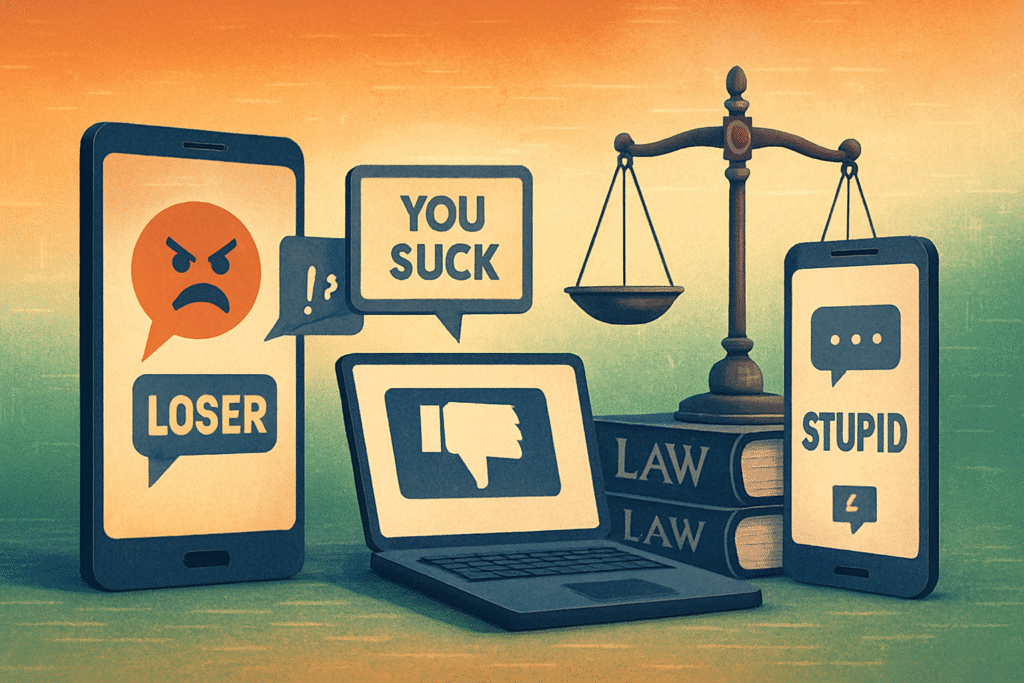Published on 12th July 2025
Authority By: Soumali Chatterjee
Calcutta University
Abstract
The separation of powers theory and the crucial ideas of judicial review with constitutional governance. Judicial review empowers courts to examine the constitutionality of legislative and executive actions, ensuring they adhere to constitutional principles and protect individual rights. On the other hand, the doctrine of separation of powers delineates the distinct roles of the legislative, executive, and judicial branches of government, preventing any branch from overstepping its authority. The interplay between judicial review and the separation of powers is crucial for maintaining the balance of power within a democratic framework.
Key Words: Judicial review, Separation of power, domestic framework.
Introduction
The principles of judicial review and the doctrine of separation of powers are fundamental to the functioning of a democratic government. Judicial review refers to the power of courts to examine the constitutionality of laws, government actions, and decisions, ensuring that they are in line with the constitution and protect individual rights1. The doctrine of separation of powers, on the other hand, divides power among the legislative, executive, and judicial branches of government, preventing any one branch from becoming too powerful.
In India, these principles are enshrined in the Constitution, which establishes the framework for governance and ensures accountability. The Supreme Court and High Courts have played a significant role in shaping these principles through landmark judgments, balancing the power between the branches of government and protecting fundamental rights.
Background
The Constituent Assembly’s careful considerations led to the insertion of Article 13. The framers recognized the need to prevent legislative intrusion on basic rights; therefore, they incorporated judicial review provisions that allow courts to declare laws that violate these rights unconstitutional. Article 13 represents a commitment to preserve justice and democracy and is influenced by international constitutional norms, such as the judicial review doctrine established in the U.S. Supreme Court’s ruling in Marbury v. Madison (1803).
Article 13 Judicial Review Significance:
Article 13 gives the judiciary the authority to make sure that all legislative activities adhere to fundamental rights. This authority supports the rule of law and guards against the legislature or executive branch abusing its power.
Protecting Fundamental Rights: The clause ensures that the rights guaranteed by Part III of the Constitution are shielded from capricious legislative actions by acting as their guardian.
Accountability: Article 13 guarantees respect for constitutional values and holds the legislature responsible by exposing laws to judicial review.
In the Indian Constitution, the principle of separation of powers is primarily addressed in Article 50, which mandates the separation of the judiciary from the executive. This article is the cornerstone for ensuring the independence of the judiciary, which is crucial for upholding the separation of powers doctrine. Additionally, Articles 361 and 1232 along with specific provisions in the Criminal Procedure Code, 1973, contribute to the overall separation of powers by granting immunity to the President and Governors, and by assigning specific roles to the judiciary and executive in the administration of justice. Article 50 of the Indian Constitution is part of the Directive Principles of State Policy (DPSPs) and focuses on the separation of the judiciary from the executive in public services3. This concept has its roots in ancient Greece and was further developed by philosophers like Aristotle, John Locke, and Baron de Montesquieu.
The idea of separation of powers gained prominence in the context of modern democracy, emphasizing the importance of dividing power among the legislative, executive, and judicial branches to prevent abuse of power and protect individual rights. This principle is essential for promoting democracy, accountability, and the rule of law.
Main Body
Analyse the nature of judicial review and the separation of powers: Judicial Review
Judicial review refers to the power of courts to examine the constitutionality of laws, government actions, and decisions. This power allows courts to:
Check legislative and executive actions: Ensuring that they are in line with the constitution and do not infringe on individual rights.
Interpret the constitution: Providing authoritative interpretations of constitutional provisions and ensuring their enforcement.
Protect individual rights: Safeguarding fundamental rights and preventing their erosion by the legislative or executive branches.
Separation of Powers
The separation of powers is a doctrine that divides power among the legislative, executive, and judicial branches of government4. This division:
Prevents concentration of power: No single branch can dominate the others, reducing the risk of abuse of power.
Promotes checks and balances: Each branch has distinct powers and responsibilities, ensuring accountability and preventing overreach.
Ensures accountability: By separating powers, each branch is held accountable for its actions, promoting transparency and good governance.
Relevant Cases
Article 13 of the Indian Constitution empowers the judiciary to review laws concerning fundamental rights. Several landmark cases have shaped the concept of judicial review in India.
IR Coelho Case (2007)
The Supreme Court ruled that any law included in the 9th Schedule of the Indian Constitution after April 24, 1973, could be subject to judicial review. This decision effectively invalidated Article 31A of the Constitution, which previously protected laws in the 9th Schedule from judicial scrutiny.
Keshavan Madhvan Menon v. State of Bombay
The court held that a law infringing on citizens’ rights after the Constitution’s commencement is “void ab initio” for citizens but remains enforceable for non-citizens and companies.
SR Bommai case
The Supreme Court elaborated on the limitations of imposing President’s rule, aiming to prevent central authority consolidation and safeguard against autocratic tendencies.
Krishna Kumar Singh case
Judicial review prevented autocracy by condemning actions like the re-promulgation of ordinances, which undermines democratic legislative processes.
National Judicial Appointments Commission (NJAC) verdict
The Supreme Court invalidated the NJAC, emphasizing the need to safeguard judicial independence, a fundamental component of the Constitution’s basic structure.
Shayra Bano verdict
The Supreme Court drove societal reform by declaring triple talaq unconstitutional and upholding constitutional values.
Article 50 of the Indian Constitution is a crucial provision that aims to separate the judiciary from the executive in public services. While specific cases directly related to Article 50 might not be readily available, some landmark judgments highlight the importance of judicial independence and separation of powers.
Kesavananda Bharati v. State of Kerala (1973)
Although not directly related to Article 50, this case established the doctrine of basic structure, which ensures that certain fundamental features of the Constitution, including judicial independence, cannot be altered or destroyed.
S.P. Gupta v. Union of India (1981)
This case emphasized the importance of judicial independence and the need for the judiciary to be free from executive interference.
Supreme Court Advocates-on-Record Association v. Union of India (1993)
This case dealt with the appointment of judges and highlighted the importance of maintaining judicial independence.
Sajjan Singh V State of Rajasthan 1964
In this landmark case, the Supreme Court of India held that the Parliament’s power to amend the Constitution under Article 368 includes the power to amend fundamental rights. The court ruled that constitutional amendments are laws under Article 13, but Article 368 provides a special procedure, implying that Parliament can amend any part of the Constitution, including fundamental rights.
Discussion
Implications of judicial review and separation of powers Judicial Review
Checks on Power: Judicial review ensures that the legislative and executive branches do not overstep their authority, protecting citizens’ rights and preventing abuse of power.
Protection of Rights: By reviewing laws and government actions, the judiciary safeguards fundamental rights and ensures that they are not infringed upon.
Interpretation of Laws: Judicial review provides authoritative interpretations of laws, helping to clarify their meaning and application.
Separation of Powers
Prevents Concentration of Power: The separation of powers prevents any one branch of government from becoming too powerful, reducing the risk of authoritarianism and abuse of power5.
Promotes Accountability: By dividing power among the branches, each branch is held accountable for its actions, promoting transparency and good governance.
Ensures Balance: The separation of powers maintains a balance between the branches, ensuring that each branch functions within its designated sphere.
Conclusion
In conclusion, judicial review and the separation of powers are fundamental components of India’s democratic system, ensuring that power is exercised responsibly and individual rights are protected. By strengthening judicial independence, promoting transparency, and ensuring clear boundaries between branches of government, India can enhance the effectiveness of judicial review and the separation of powers. This will help protect fundamental rights, promote good governance, and uphold the Constitution.
The principles of judicial review and separation of powers are essential to India’s democratic framework, and their continued strengthening will be crucial to the country’s progress and development.
References
- Narendra Kumar, ‘Constitutional Law of India’ (12th Ed. 2025) p. 92
-
Art. 361, Art. 123 of the Constitution of India.
-
‘Article 50 of the Indian Constitution: Separation of Judiciary from Executive’ (Testbook 2nd May 2025) < https://testbook.com > accessed 19th May 2025.
-
‘Legal information institute’ (Cornell Law School) < https://www.law.cornell.edu > accessed 19th May 2025
-
‘Separation of Powers in Action – U.S. v. Alvarez’ (United States Courts) < https://www.uscourts.gov > accessed 20th May 2025




